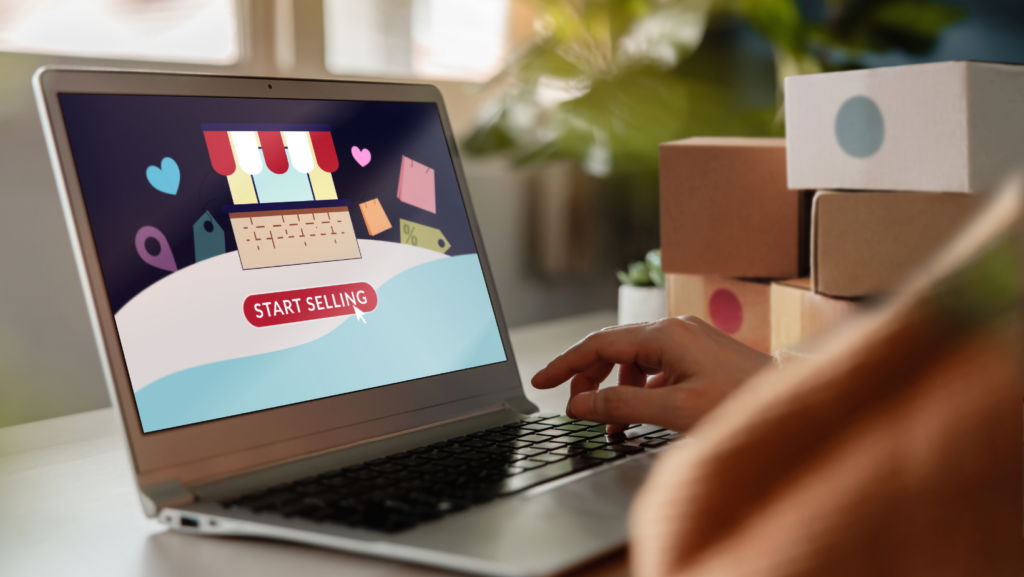How to start a small online retail business can be a thrilling venture. It’s an opportunity to turn a passion into profit, all from the comfort of home. But where does one begin? This article will provide a roadmap for budding entrepreneurs ready to dive into the world of e-commerce.
How To Start a Small Online Retail Business
 Transitioning a passion into a profitable online retail business and how to start a small online retail business involves understanding the expansive environment of e-commerce. With comprehension of growth patterns and proficient target market analysis, an entrepreneur equips their venture for success.
Transitioning a passion into a profitable online retail business and how to start a small online retail business involves understanding the expansive environment of e-commerce. With comprehension of growth patterns and proficient target market analysis, an entrepreneur equips their venture for success.
E-commerce exhibits a consistent upward trajectory, largely due to technological advancements and shifting consumer preferences. Statista predicts that by 2023, over 2.14 billion people worldwide are expected to buy goods and services online, up from 1.66 billion in 2016. Indicators reveal e-commerce as a leading sector in the business industry.
Target Market Analysis
Analyzing the target market provides vital insights into the needs and behaviors of prospective customers. Studies indicate that 88% of online shoppers consider detailed product descriptions to be extremely important, alongside 78% who appreciate high-quality product pictures. Understanding the target market’s requirements cultivates a productive consumer-business relationship and tailors strategies beneficial for both parties.
Planning Your Business Strategy
 In the pursuit of establishing a solid retail business and how to start a small online retail business, devising a sound business strategy stands pivotal. This aspect involves determinative steps like selecting the right products and finding trustworthy sources.
In the pursuit of establishing a solid retail business and how to start a small online retail business, devising a sound business strategy stands pivotal. This aspect involves determinative steps like selecting the right products and finding trustworthy sources.
Entering the realm of retail demands a thorough understanding of the type of products that would align with the business vision and consumer needs. A keen analysis of the market trends, buying patterns, and customer behavior assumes an integral role in deciding the appropriate products. For instance, if a business targets health-conscious individuals, the selection might involve organic foods, health supplements, workout equipment, and the likes.
Identifying Suppliers
Spotting reliable suppliers represents another crucial step in formulating a business strategy. Companies could consider local or international suppliers, factoring in costs, quality, supply consistency, and past supplier performance. For instance, if a business is dealing with handmade craft items, local artisans could be potential suppliers. On the other hand, if a business intends to sell electronics or tech gadgets, international suppliers might offer a wider range, possibly at competitive prices. It’s advantageous to cultivate a relation with multiple suppliers, reducing dependency and mitigating potential supply-chain hiccups.
Setting Up Your Online Store
 After strategizing and identifying target customers, market needs, and reliable suppliers, it’s time to construct the core of your online retail business: the online store. This phase involves selecting the right e-commerce platform and developing a compelling, user-friendly website that mirrors the value and appeal of your chosen products.
After strategizing and identifying target customers, market needs, and reliable suppliers, it’s time to construct the core of your online retail business: the online store. This phase involves selecting the right e-commerce platform and developing a compelling, user-friendly website that mirrors the value and appeal of your chosen products.
An online store revolves around a digital infrastructure – the e-commerce platform. It constitutes a key aspect of setting up an online retail business. With multiple platforms available, chain of thought involves considering ease of use, compatibility with business model, cost effectiveness, and potential for growth. For example, Shopify offers a wide range of tools and templates for different business sizes, WordPress features the WooCommerce plugin for e-commerce functionalities, while Magento is renowned for handling large inventories and high traffic sites. Research each platform thoroughly, contemplating their distinctive features and how they align with the business’s particular needs and strategy.
Designing Your Website
A website not only displays products but also establishes the brand’s style, promises quality, and provides seamless online shopping experiences. A well-designed website retains customers and boosts sales. Keep the design clean, ensuring easy navigation and fast page loading times. Use high-quality images and compelling product descriptions, consistent with the previous recommendation. Incorporate mobile-friendly designs to cater to increasing smartphone users. For instance, H&M’s site presents a tidy layout, enabling customers to sift through numerous product categories easily, and Zara uses large, clear pictures, emphasizing their products’ details and persuading users to click on ‘add to cart.’ Ensuring a smooth, enjoyable user experience through competent website design leads to a successful online store.

